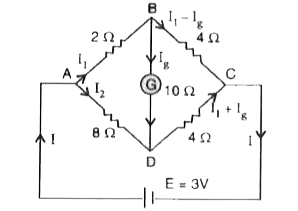Complete Solutions to Exercise of chapter Sample Paper 4 of Class 12 book with complete answers and questions
| Class 12 | PHYSICS |
| Chapter | Sample Paper 4 |
| OSWAAL PUBLICATION | Exercise |
| Number Of Questions | 37 |
| Academic Year | 2023-24 |
What is the electric field inside a conductor ?
View SolutionHow does the resistivity of a conductor vary with temperature?
View SolutionState and explain Gauss's law in magnetism.
View SolutionMention any three application of eddy currents.
View SolutionWhich type of lens is used to correct myopia(short sightedness) ?
View SolutionWhat is the rest mass of photon?
View SolutionWrite three postulates of Bohr. Mention two limitation of Bohr model.
View SolutionDefine mean life of a radioactive element.
View Solutionwrite the symbol of NAND gate .
View SolutionWhat is attenuation in communication system ?
View SolutionWrite Coulomb's law in vector form and explain the terms.
View SolutionMention two limitations of Ohm's law.
View SolutionWrite any two differences between diamagnetic and paramaganetic substances.
View SolutionCurrent in a coil falls from 5 A to 0 A in 0.1 s, calculate the induced emf in a coil if its self inductance is 4H.
View SolutionGive two uses of UV rays.
View SolutionDraw the ray diagram for the formation of image in case of a concave mirror when the object is placed at the centre of curvature of a mirror.
View SolutionDistinguish between extrinsic and intrinsic semiconductors.
View SolutionWrite the block diagram of a transmitter.
View SolutionDerive the relation between electric field and electric potential.
View SolutionArrive at the expression for velocity selector using Lorentz force.
View SolutionMention any three salient features of Hysteresis loop.
View SolutionDerive the expression for motional emf induced in a conductor moving in a uniform magnetic field.
View SolutionMention one power loss in transformer.
View SolutionUsing Huygen's wave theory of light, show that the angle of incidence is equal to angle of reflection in case of reflection of a plane wavefront by a plane surface.
View SolutionWrite Einstein's photoelectric equation. State clearly how this equation is obtained using the photon picture of electromagnetic radiation.
Write the three salient features observed in photoelectric effect which can be explained using this equation.
View SolutionExplain the working of a zener diode as a voltage regulator.
View SolutionDerive an expression for electric field due to an electric dipole at a point on the axial line.
View SolutionObtain an expression for the equivalent emf and internal resistance of two cells connected in parallel.
View SolutionDerive the expression for magnetic field at a point on the axis of a circular current loop.
View Solutionwhat is interference ? Write the condition for path difference in case of constructive and destructive interference.
View SolutionObtain an expression for the total energy of an electron in the `n^(th)` orbit of hydrogen atom in terms of absolute constants.
View SolutionWhat is amplification? With a circuit diagram, explain the working of npn transistor as an amplifier in CE configuration.
View SolutionTwo point charges `5 xx 10^(-8) C` and `3 xx 10^(-8) C` are locate 16 m apart. At what points on the line joining the two charges is the electric potential zero ?
View SolutionDetermine the current through the galvanometer in the circuit. Given `:P=2 Omega, Q = 4 Omega, R =8 Omega S =4 Omega G =10 Omega, E =5 and r =0.`

View SolutionObtain the resonant frequency `omega_(r)` of a series LCR circuit with L = 2.0 H. `C = 32muF`, and `R=10Omega`. What is the Q - value of this circuit?
View SolutionAn object of size 3.0cm is placed 14cm in front of a concave lens of focal length 21cm. Describe the image produced by the lens. What happens if the object is moved further away from the lens?
View SolutionConsider the fission of `""_(92)^(238)U` by fast neutrons. In one fission event, no neutrons are emitted and the final end products, after the beta decay of the primary fragments, are `""_(58)^(140)Ce` and `""_(44)^(99)Ru`. Calculate Q for this fission process. The relevant atomic and particle masses are
`m(""_(92)^(238)U) =238.05079 u`
`m( ""_(58)^(140)Ce ) =139.90543 u`
`m(""_(44)^(99)Ru ) = 98.90594 u`
View Solution
Exercise questions and complete solutions for chapter Sample Paper 4 of OSWAAL PUBLICATION PHYSICS (KANNADA ENGLISH) of Class 12